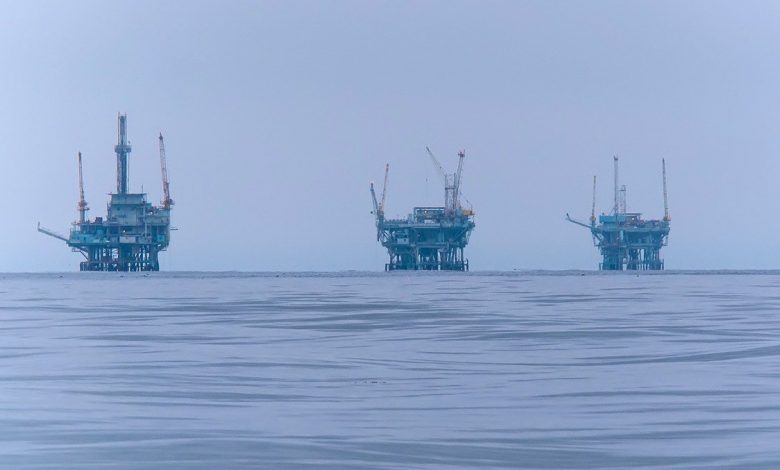Forget oversupply, the offshore rig market presents opportunity

The world is awash with more offshore rigs than it will ever need. But established rig owners can ignore that and focus on the market recovery, argues David Carter Shinn from Bassoe Offshore.
Certain trends which signify a rig market recovery have emerged insidiously over the past four months. Now they’re obvious enough to warrant attention. Rig contracting activity is up, utilization is up, asset values are up, and the oil price is relatively stable. Some “stranded” rigs are being acquired by new buyers, and purchase offers for others are increasing in number and volume. The growing interest in newer, higher spec jackups and 6th and 7th generation semisubs (especially harsh environment) and drillships is pushing asset values upward.
But ominous realities remain.
While the problems in the offshore rig market are a result of three years of decreasing demand, the most frustrating issue for rig owners has been the unbridled construction of newbuild rigs which are now sitting at shipyards in a state of suspended animation.
Nearly all owners have predicted a recovery in the rig market at various points in the future. The main obstacle, however, in their outlook has been conceptualizing and rationalizing a rig supply vs. demand balance. If one looks solely at the numbers, the gap between supply and demand is too wide to be overcome without any additional stimuli on one or both sides of the equation.
From 2010 until 2014, excess supply (including rigs under construction) for jackups was around 25% of the total fleet. For semisubs, the number was around 15%. Oversupply of drillships has been high for much longer as the ultra deepwater market came into existence (i.e., this segment didn’t exist before and was expected to grow indefinitely).
The spike in demand led owners to keep old rigs in service while they also built new ones. When demand tumbled, the market was left with a serious oversupply.
Now oversupply in all three segments is around 50% of the total fleet.
One view is that, to reach a market balance, demand must increase to levels never seen before and/or rig scrapping must be effectuated on an extraordinary scale. But for established drilling contractors, this view is somewhat irrelevant.
Rig demand is increasing, and oil companies are becoming more selective
In March, Ensco stated in an investor presentation that they have seen a 200% increase in number of rig years tendered for jackups year over year. Deepwater will also become interesting going forward for both plug and abandonment work and large new projects. We see opportunities in harsh environments (North Sea, and possibly Canada), regions such as Brazil (as we mentioned previously), Mexico, West Africa, the US Gulf, and the Middle East.
Demand growth alone, however, won’t vanquish oversupply. Even assuming complete attrition of the entire fleet of rigs over 20 years of age, there are too many rigs in the market.
But oil companies have become more selective than ever. They want reliable assets from drilling contractors with safe and efficient operations and management systems who can fulfill drilling requirements according to more rigid standards.
This strengthens the competitiveness for established drilling contractors who not only have the organization and experience to perform, but also who have rigs which are ready to work.
The good will get better
The key to rationalizing oversupply is to focus on the rigs (and rig owners) which are truly competitive.
As time goes on, newbuild rigs which continue to stay stacked or preserved, undelivered, at yards will become less competitive. Reactivation costs and time to market will increase, putting them at a disadvantage against active rigs. At the same time, old cold stacked rigs will be less and less likely to ever return to market.
It’s almost like a “rich get richer and poor get poorer” scenario where the former are established, well-funded, and/or differentiated drilling contractors and the latter are speculative, new-entrant owners (of jackups) or ultra deepwater rig owners who have a high proportion of long-term cold stacked rigs which haven’t been preserved properly.
And eventually, if demand increases enough to start encroaching into the supply of the non-competitive rigs, the established owners may be able to acquire these assets if they need to. By that time, however, the original owners of those rigs may not recover much of their investment at all.
Some rig owners are already positioning themselves for the future and taking advantage of the more selective rig contracting environment. They’re investing more in rig preservation, investigating opportunities to purchase rigs at lower asset values, and strengthening their operational systems and technology.
While the recovery fully materializes, they don’t have to concern themselves with the lingering excess supply in the rig market. For them, the problem isn’t the 58 speculative (new entrant) jackups sitting in Asian yards or the vast amount of newbuild ultra deepwater drillships which are incurring higher future costs by the day (because of poor stacking routines).
What’s important is being able to meet the new demands of a lower cost, higher efficiency market and taking advantage of the expanding divide between competitiveness and non-competitiveness. That will ensure that they benefit from the recovery instead of finding themselves left behind.

